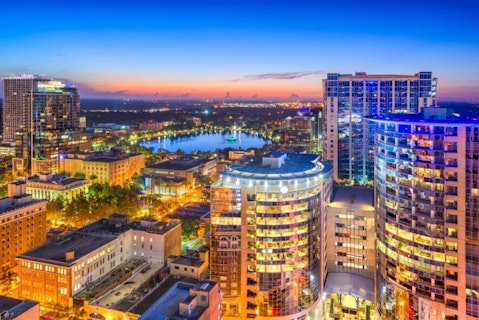This article will take a look at the 30 most densely populated cities in the US. You may skip the details and read 10 Most Densely populated cities in the US.
As of 2018, there were 19,495 incorporated cities, towns and villages in the United States – and out of those, 14,768 have populations below 5,000. Only ten places have populations above 1 million and none are above 10 million. 310 cities are considered at least medium cities with populations of 100,000 or more. The largest city in the U.S. — part of the Northeast megalopolis — is New York City, with a population of 8.5 million people. New York City has five boroughs: Manhattan, the Bronx, Brooklyn, Queens, and Staten Island. New York City is also the largest metropolitan area in the world by urban area (4,585 square miles) and by population by both Metro Statistical Area (20.3 million) and combined statistical area (23.7 million).
Population growth in any area can have many effects, but one of the most notable effects of dense population on industries is the heightened demand for goods and services. In densely populated cities, consumer markets are larger and more diverse, presenting businesses with lucrative opportunities to cater to the needs and preferences of urban dwellers. For example, companies like Walmart Inc. (NYSE:WMT), Target Corporation (NYSE:TGT), and Costco Wholesale Corporation (NASDAQ:COST) strategically establish their stores in urban centers to capitalize on dense population concentrations and cater to the needs of urban shoppers.
According to their financial reports, Walmart Inc. (NYSE:WMT)’s total revenue for the fiscal year 2023 was $648.13 billion, representing an increase of about 6.03% compared to the previous year. Whereas, Costco Wholesale Corporation (NASDAQ:COST)’s revenue for the fiscal year ending September 3, 2023, was $242.3 billion, representing a 6.7% YoY growth. It is important to note that for both companies, a huge chunk of their revenue comes from New York city. Therefore, from retail stores and hospitality to healthcare and entertainment, industries must adapt and innovate to meet the demands of densely populated urban markets, driving competition and fostering dynamic economic ecosystems.
Moreover, dense population centers often serve as hubs of innovation and entrepreneurship, fueled by the concentration of talent, resources, and investment opportunities. Tech havens like Silicon Valley in California and the burgeoning startup scene in cities like Austin, Texas, thrive amidst dense urban landscapes, harnessing the creative energy and collaborative spirit of densely populated environments to drive technological advancements and economic growth. However, alongside opportunities and diversity, challenges come in the view too. As populations swell and urban boundaries expand, issues such as housing affordability, transportation congestion, and unstable living conditions, impacting the overall way of life for those residing in densely populated cities.
Overcrowding is more prevalent in densely populated cities, with a higher percentage of households living in overcrowded conditions, defined as having more than one person per room, compared to less densely populated areas. Therefore, high population density is associated with increased housing instability. In an article on housing accessibility in densifying cities, it has been identified that renters in densely populated areas are more likely to experience eviction and housing displacement due to rising rents and limited affordable housing options. It is also said that in cities with high population density, housing costs tend to be significantly higher; For example, in San Francisco, the median rent for a one-bedroom apartment is around $3,400 per month, compared to $1,200 in a less densely populated city like Indianapolis. This hike in the rents impacts the overall purchasing power of the residents living in densely populated cities because a significant chunk of their income is spent paying for housing.
Cities with high population density tend to have the worst traffic congestion; Los Angeles and New York City consistently rank among the top cities in the United States for traffic congestion, with commuters spending an average of 100 hours or more stuck in traffic congestion each year. Poor traffic conditions impact people and cities in more ways than one.
A study published on ‘Traffic Congestion’s Economic Impacts’, found that traffic congestion in densely populated areas leads to significant economic costs, including lost productivity, increased fuel consumption, and higher vehicle maintenance expenses. It is also estimated that traffic congestions costs the economy over $160 billion annually, which is a significant loss for any economy.

Methodology
Our journey through the 30 most densely populated cities in the US offers a nuanced glimpse into the intricacies of modern urban life. To compile our list of the world’s most densely populated cities, we first consulted US Census Bureau, alongside several reliable data sources and lists on America’s most populous cities. Then, each of their population estimates was individually determined through the latest census figures. These estimates were divided by the cities’ area in square miles. Finally, the most densely populated cities were chosen.
By the way, Insider Monkey is an investing website that tracks the movements of corporate insiders and hedge funds. By using a similar consensus approach, we identify the best stock picks of more than 900 hedge funds investing in US stocks. The top 10 consensus stock picks of hedge funds outperformed the S&P 500 Index by more than 140 percentage points over the last 10 years. Whether you are a beginner investor or a professional one looking for the best stocks to buy, you can benefit from the wisdom of hedge funds and corporate insiders – check details here.
30 Most Densely Populated Cities in the US
30. Houston, Texas
Population density (per square mile): 3,599
Houston, the largest city in Texas and the fourth largest in the United States, is a vibrant and diverse metropolis known for its cultural richness, and entrepreneurial spirit. It is situated in the southeastern region of Texas, Houston and is a unique blend of Southern charm, cosmopolitan flair, and a strong economy that drives innovation and growth across multiple industries.
29. Mesa, Arizona
Population density (per square mile): 3,736
Mesa, located in the Phoenix metropolitan area of Arizona, is a city characterized by its desert landscape, cultural heritage, and wholesome community spirit. As the third-largest city in Arizona, Mesa encompasses an area of approximately 138 square miles (357 square kilometres) and is home to a diverse population.
28. Atlanta, Georgia
Population density (per square mile): 3,745.5
Atlanta has a population of around 499,127 residents within the city limits, making it the largest city in Georgia and the ninth-largest metropolitan area in the United States. The Greater Atlanta area, which includes surrounding suburbs and counties, is home to over 6 million people, reflecting the city’s status as a booming urban center with a diverse population drawn from all around the world.
27. Dallas, Texas
Population density (per square mile): 3,841
Dallas has a population of around 1.3 million residents within the city limits, making it the ninth-largest city in the United States. The Dallas-Fort Worth metropolitan area, commonly referred to as the DFW Metroplex, is one of the largest metropolitan areas in the country, with a population exceeding 7.6 million people. This metroplex includes a network of cities and suburbs surrounding Dallas and Fort Worth, collectively forming a vibrant and interconnected urban landscape.
26. Columbia, South Carolina
Population density (per square mile): 4,117
Columbia, the capital city of South Carolina, has a population of over 137,000 residents within the city limits. The Columbia metropolitan area, which includes surrounding suburbs and counties, has a population of over 800,000 people. It encompasses an area of approximately 134 square miles (347 square kilometers).
25. Arlington, Virginia
Population density (per square mile): 4,160
Located just across the Potomac River from Washington, D.C., Arlington has a population of more than 237,000 residents. Arlington is part of the larger Washington metropolitan area, which has a population exceeding 6 million people. Arlington encompasses an area of approximately 26 square miles (67 square kilometers).
24. San Diego, California
Population density (per square mile): 4,256
San Diego, a major city on the Pacific coast of California, has a population of approximately 1.4 million residents within the city limits. The San Diego metropolitan area, which includes surrounding communities in San Diego County, has a population of over 3 million people.
23. Las Vegas, Nevada
Population density (per square mile): 4,527
Las Vegas encompasses an area of approximately 135 square miles (350 square kilometers). It has a population of approximately 651,000 residents within the city limits. The Las Vegas metropolitan area, which includes surrounding suburbs and communities in Clark County, has a population of over 2.3 million people.
22. Fresno, California
Population density (per square mile): 4,615
Fresno, located in the heart of California’s San Joaquin Valley, has a population of approximately 530,000 residents within the city limits. The Fresno metropolitan area, which includes Fresno County and neighboring counties, has a population of over 1 million people. It encompasses an area of approximately 114 square miles (295 square kilometers).
21. Denver, Colorado
Population density (per square mile): 4,751
The capital city of Colorado, Denver has a population of approximately 715,000 residents within the city limits. The Denver metropolitan area, also known as the Denver-Aurora-Lakewood metropolitan statistical area, has a population exceeding 3.5 million people. It encompasses an area of approximately 155 square miles (401 square kilometers).
20. Detroit, Michigan
Population density (per square mile): 4,830
Detroit encompasses an area of approximately 142.9 square miles (370 square kilometers). Located in southeastern Michigan, this city has a population of approximately 670,000 residents within the city limits. The Detroit metropolitan area, which includes surrounding counties in Michigan and parts of Ohio, has a population of over 4.3 million people.
19. Portland, Oregon
Population density (per square mile): 4,888
The Portland metropolitan area, which includes Multnomah County, Washington County, Clackamas County, and parts of Yamhill County, has a population of over 2.5 million people. This city encompasses an area of approximately 145 square miles (375 square kilometres).
18. Cleveland, Ohio
Population density (per square mile): 4,901
Cleveland has a population of approximately 380,000 residents. It encompasses an area of approximately 82.5 square miles (214 square kilometers). The Cleveland metropolitan area, which includes Cuyahoga County and surrounding counties in Northeast Ohio, has a population of over 2 million people.
17. Sacramento, California
Population density (per square mile): 5,209
Sacramento encompasses an area of approximately 100.1 square miles (259 square kilometers) and a population of approximately 525,000 residents.
16. San Jose, California
Population density (per square mile): 5,683
San Jose, located in the heart of Silicon Valley, has a population of approximately 1.1 million residents within the city limits, making it the third-largest city in California by population. San Jose encompasses an area of approximately 180.5 square miles (467 square kilometers), making it the largest city in Northern California by land area.
15. Milwaukee, Wisconsin
Population density (per square mile): 6,136
Milwaukee, situated on the western shore of Lake Michigan, has a population of approximately 590,000 residents within its premises. The Milwaukee metropolitan area, which includes Milwaukee County and surrounding counties in southeastern Wisconsin, has a population of over 1.5 million people.
14. Anaheim, California
Population density (per square mile): 6,969
Anaheim has an area of approximately 50 square miles (130 square kilometers) and has a population of approximately 355,000 residents within the city limits. The population density in Anaheim is 6,969 people per square mile, putting it at 14th spot on our list of the most densely populated US cities.
13. Baltimore, Maryland
Population density (per square mile): 7,240
Baltimore, situated on the shores of the Chesapeake Bay, has a population of approximately 590,000 residents within the city limits. The Baltimore metropolitan area, which includes Baltimore City and surrounding counties in central Maryland, has a population of over 2.8 million people. The approximate area of this city is 92.1 square miles (239 square kilometers).
12. Oakland, California
Population density (per square mile): 7,746
The Oakland metropolitan area, which includes Oakland and neighboring cities in Alameda County, has a population exceeding 2.5 million people and has a population of approximately 440,000 residents within the city limits.
11. Minneapolis, Minnesota
Population density (per square mile): 7,956
Minneapolis, the largest city in Minnesota, has a population of approximately 430,000 residents within the city limits and a density of 7,956 people per square mile, making it one of the most densely populated cities in America. The Minneapolis-Saint Paul metropolitan area, also known as the Twin Cities, has a population exceeding 3.6 million people.
Click to continue reading and see 10 Most Densely Populated Cities in the US.
Suggested Articles:
- 50 Most Populated Countries in the World in 2024
- 30 Most Densely Populated Islands in the World
- 50 Most Populated Countries in 2100
Disclosure: None. 30 Most Densely Populated Cities in the US is originally published on Insider Monkey.





